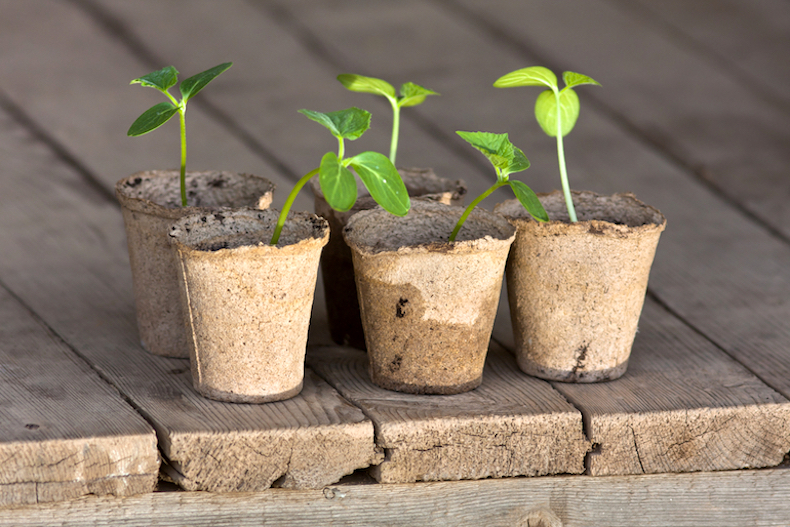Yes, you can grow different cucumber varieties together. They will not affect each other’s growth or fruit quality.
Growing different cucumber varieties together offers various benefits. It maximizes space, diversifies harvests, and can enhance overall garden health. Different types may have unique resistance to pests and diseases, providing natural protection. Mixing varieties also allows you to experiment with flavors, textures, and uses in the kitchen.
For successful growth, ensure proper spacing, adequate sunlight, and consistent watering. Choose varieties suited to your climate and soil conditions. Companion planting with cucumbers can further boost garden productivity. Always monitor for any signs of disease or pest issues, and address them promptly. By diversifying your cucumber plants, you create a robust and bountiful garden.

Credit: www.reddit.com
Introduction To Cucumber Varieties
Cucumbers are a beloved garden vegetable. They come in many shapes and sizes. Each variety has its own unique features. Knowing the different types can help you choose the best for your garden.
Types Of Cucumbers
There are two main types of cucumbers: slicing and pickling. Slicing cucumbers are larger and ideal for fresh eating. Pickling cucumbers are smaller and perfect for making pickles.
Popular Varieties
There are many popular cucumber varieties. Here are a few:
- Marketmore 76: A popular slicing cucumber.
- Boston Pickling: Ideal for making pickles.
- Armenian: Known for its unique shape and flavor.
- English: Long and thin, great for salads.
- Lemon: Round and yellow, with a mild taste.
| Variety | Type | Features |
|---|---|---|
| Marketmore 76 | Slicing | Large, dark green, crisp |
| Boston Pickling | Pickling | Small, crunchy, great for pickles |
| Armenian | Slicing | Unique shape, mild flavor |
| English | Slicing | Long, thin, seedless |
| Lemon | Slicing | Round, yellow, mild taste |

Credit: www.reddit.com
Benefits Of Growing Multiple Varieties
Growing different cucumber varieties together offers numerous advantages. This approach can enhance your garden’s productivity and provide a rich experience. Here are some key benefits.
Extended Harvest Season
Planting multiple cucumber varieties can extend the harvest season. Different varieties mature at different times. This means you can enjoy fresh cucumbers for a longer period. For example, early-maturing varieties can start producing in June. Later-maturing varieties might continue to produce until September. This staggered harvest reduces waste and ensures a steady supply of cucumbers.
Diverse Flavors And Uses
Various cucumber varieties come with unique flavors and textures. Some are sweet, while others are more bitter. This diversity allows you to use cucumbers in different dishes. Slicing cucumbers are perfect for salads and sandwiches. Pickling cucumbers are ideal for making delicious pickles. You can also find cucumbers with thin or thick skins to suit your taste. Growing multiple varieties adds excitement to your meals.
Compatibility Of Different Varieties
Growing different cucumber varieties together can be an exciting venture. You might wonder if these varieties can coexist in your garden. Understanding their compatibility helps ensure a bountiful harvest.
Cross-pollination Factors
Cross-pollination occurs when pollen from one flower fertilizes another. This can affect the fruit’s characteristics and the seeds’ genetics. Cucumbers are generally cross-pollinated by bees and other insects. If you grow different varieties close together, cross-pollination is likely.
Hybrid cucumbers can produce unpredictable results when cross-pollinated. Their seeds might not grow into true-to-type plants. Heirloom varieties, on the other hand, tend to be more stable. They produce seeds that are true to the parent plant.
Hybrid Vs. Heirloom
Hybrids are cucumbers bred for specific traits like disease resistance or higher yield. They are often marked as “F1” on seed packets. They can offer uniformity and vigor but do not breed true. Heirlooms are older, open-pollinated varieties. They are valued for their taste and genetic diversity. They can be saved and replanted year after year.
Here’s a quick comparison:
| Type | Characteristics | Seed Stability |
|---|---|---|
| Hybrid | Disease-resistant, high yield | Unstable, does not breed true |
| Heirloom | Great taste, genetic diversity | Stable, breeds true |
Choosing between hybrids and heirlooms depends on your goals. If you want consistent results and are not saving seeds, hybrids might be for you. If you love unique flavors and saving seeds, heirlooms are a great choice.
Soil And Nutrient Requirements
Growing different cucumber varieties together can be rewarding. However, soil and nutrients play a critical role in their success. Ensuring optimal conditions can enhance their growth and yield.
Optimal Soil Conditions
For healthy cucumber growth, soil must be well-draining and loamy. Loamy soil retains moisture without becoming waterlogged. The pH level should be between 6.0 and 6.8. This range ensures nutrient availability for the plants. Soil testing can help you determine the pH and nutrient levels.
To improve soil structure, consider adding organic matter like compost. Organic matter enriches the soil and supports beneficial microorganisms. It also enhances soil aeration and moisture retention.
Fertilization Tips
Cucumbers need a balanced supply of nutrients for optimal growth. Use a fertilizer with an NPK ratio of 5-10-10 for best results. Apply the fertilizer before planting and work it into the soil.
During the growing season, side-dress with compost or a balanced fertilizer. This practice provides essential nutrients as the plants develop. Regular feeding supports healthy vine and fruit production.
Consider using a fertilization schedule to keep track of applications. This ensures consistent nutrient supply throughout the growing season.
| Stage | Fertilizer Type | Application Method |
|---|---|---|
| Pre-planting | Compost or 5-10-10 fertilizer | Work into the soil |
| Mid-season | Compost or balanced fertilizer | Side-dress |
Lastly, ensure consistent watering to help nutrient uptake. Cucumbers thrive in evenly moist soil.
Planting Techniques
Growing different cucumber varieties together is possible with the right planting techniques. This approach can result in a bountiful and diverse harvest. Here are some effective methods to ensure your cucumbers grow harmoniously.
Spacing Guidelines
Proper spacing is crucial for healthy cucumber plants. Each plant needs room to grow and spread. This helps avoid competition for nutrients and sunlight.
- Bush varieties: Plant them 18 inches apart.
- Vining varieties: Space them 36 inches apart.
Use a trellis for vining types to save space. This also helps keep the fruits clean.
Companion Planting
Companion planting can enhance cucumber growth. Certain plants provide benefits such as pest control and improved soil health.
| Companion Plant | Benefit |
|---|---|
| Marigolds | Repel pests |
| Nasturtiums | Attract beneficial insects |
| Radishes | Improve soil health |
Avoid planting cucumbers near potatoes or aromatic herbs. They can hinder cucumber growth.
Watering And Care
Proper watering and care are essential for growing different cucumber varieties together. Each variety has unique needs, but there are general practices to follow.
Irrigation Methods
Effective irrigation ensures healthy growth for all cucumber varieties. Use a drip irrigation system to provide consistent moisture. This method reduces water waste and keeps leaves dry, preventing diseases.
Water the plants early in the morning. This allows the soil to absorb moisture before the heat of the day. Avoid watering in the evening to prevent fungal growth.
Mulching around cucumber plants helps retain soil moisture. Use organic mulch like straw or wood chips. This also keeps weeds at bay, ensuring better plant health.
Pest And Disease Control
Pests and diseases can harm your cucumber plants. Regular monitoring and preventive measures are crucial.
- Aphids: Spray plants with a strong stream of water to dislodge them.
- Cucumber Beetles: Use row covers to protect young plants.
- Powdery Mildew: Apply a fungicide or use a baking soda solution.
Rotate crops yearly to prevent soil-borne diseases. Avoid planting cucumbers in the same spot each year. This practice helps in maintaining healthy soil and reducing disease risk.
Maintain good airflow around plants by spacing them properly. This reduces humidity and discourages mold and mildew.
Harvesting And Storage
Harvesting and storing cucumbers correctly ensures you get the best flavor and texture. This guide will help you know when to harvest and how to store your cucumbers. Learn the best practices to enjoy fresh cucumbers for longer.
When To Harvest
Knowing the right time to harvest cucumbers is crucial. Harvesting at the right time ensures you get the best quality. Here are some tips:
- Pick cucumbers when they are firm and bright green.
- Check the size. Slicing cucumbers should be 6-8 inches long.
- Pickling cucumbers should be 3-4 inches long.
- Do not wait too long. Overripe cucumbers turn yellow and taste bitter.
- Use a sharp knife or scissors to cut the stem. Avoid pulling.
Best Storage Practices
Proper storage keeps cucumbers fresh and crunchy. Follow these tips:
- Refrigerate: Store cucumbers in the fridge. Keep them in the crisper drawer.
- Plastic Bag: Place cucumbers in a plastic bag. It helps retain moisture.
- Temperature: Keep the temperature around 50°F (10°C). Avoid freezing.
- Avoid Ethylene: Keep cucumbers away from bananas and apples. They produce ethylene gas.
- Check Regularly: Inspect cucumbers every few days. Remove any that are soft or moldy.
Follow these tips to enjoy fresh, tasty cucumbers from your garden. Harvest at the right time and store them properly.

Credit: www.thompson-morgan.com
Common Challenges And Solutions
Growing different cucumber varieties together can be fun. But it also brings challenges. This section will cover common problems and provide easy solutions.
Dealing With Pests
Pests can damage your cucumber plants. Here are some tips to manage them:
- Aphids: Spray soapy water on the leaves.
- Spider Mites: Use neem oil for effective control.
- Cucumber Beetles: Employ row covers to protect plants.
Keep your garden clean. Remove plant debris regularly. This helps reduce pest hiding spots.
Preventing Disease
Different cucumber varieties can get diseases. Here are solutions for common diseases:
| Disease | Solution |
|---|---|
| Powdery Mildew | Use fungicides. Ensure good air circulation. |
| Downy Mildew | Water plants early in the day. Avoid overhead watering. |
| Bacterial Wilt | Remove infected plants. Rotate crops each year. |
Choose disease-resistant varieties. This helps keep your garden healthy.
By dealing with pests and preventing disease, you can grow different cucumber varieties successfully.
Frequently Asked Questions
Can You Plant Different Cucumber Varieties Together?
Yes, you can plant different cucumber varieties together. They will grow well without affecting each other negatively. However, cross-pollination may occur, affecting seeds for the next planting season.
Will Cross-pollination Affect Cucumber Fruit?
Cross-pollination does not affect the fruit of this season. However, if you save seeds, they may produce different plants next year.
Do Different Cucumber Varieties Compete For Nutrients?
Different cucumber varieties do not compete for nutrients if properly spaced. Proper care ensures healthy growth for all varieties.
Can Different Cucumber Types Grow In The Same Garden?
Yes, different cucumber types can grow in the same garden. Ensure they have enough space and proper care.
Conclusion
Growing different cucumber varieties together is entirely possible. They can thrive in the same garden space. Ensure proper spacing and care to maximize their growth. Enjoy a diverse cucumber harvest by experimenting with various types. Happy gardening, and relish the fruits of your labor!
